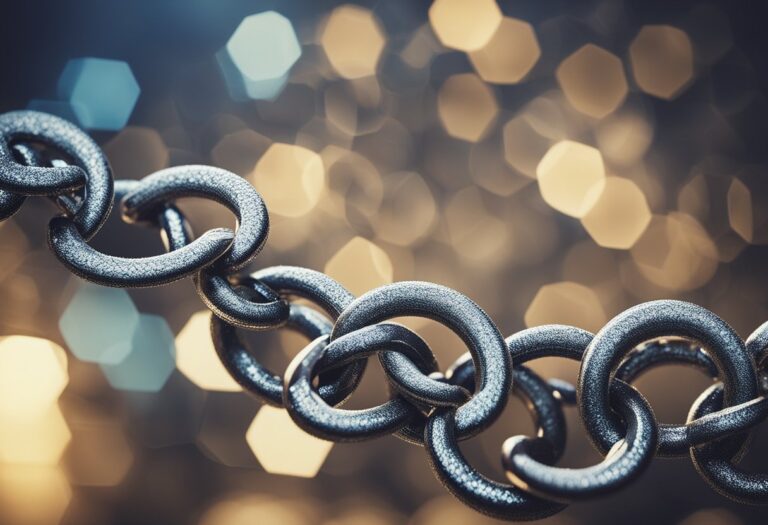Acupuncture, an ancient healing art, has captivated the interest of both traditional and modern medical practitioners. This time-honored technique involves inserting thin needles into specific points on the body to promote healing and alleviate various ailments.
Acupuncture works by stimulating the body’s natural healing processes, promoting blood flow, and releasing endorphins to reduce pain and stress.

As you explore the principles of acupuncture, you’ll discover its roots in traditional Chinese medicine and how it has evolved to integrate with contemporary healthcare practices.
The concept of Qi, or vital energy, flows through meridians in the body, and acupuncture aims to balance this energy to restore health and well-being. Modern research continues to shed light on the physiological mechanisms behind acupuncture’s effectiveness, providing scientific backing to this ancient practice.
Key Takeaways
- Acupuncture stimulates the body’s natural healing processes by targeting specific points.
- The practice is based on balancing the flow of energy through meridians in the body.
- Scientific research supports acupuncture’s effectiveness for various health conditions.
The Origins of Acupuncture
Acupuncture’s roots trace back thousands of years to ancient China. This healing practice emerged as part of Traditional Chinese Medicine and was initially used to treat various ailments.
The History of Traditional Chinese Medicine
Traditional Chinese Medicine (TCM) dates back over 2,500 years. It developed from observations of nature and the human body. TCM views health as a balance of opposing forces – yin and yang.
Ancient Chinese healers believed illness resulted from imbalances in the body’s energy flow, called qi. They developed methods to restore this balance, including acupuncture, herbal medicine, and dietary therapy.
TCM concepts emerged during the Warring States period (475-221 BCE). The foundational text “Huangdi Neijing” (The Yellow Emperor’s Classic of Internal Medicine) was compiled around 200 BCE. This work outlined key principles of TCM and acupuncture that are still relevant today.
Early Uses of Acupuncture in Ancient China
Acupuncture’s earliest recorded practices date back to 200 BCE. Initially, practitioners used sharp stones and bones as tools. These evolved into fine metal needles over time.
Early acupuncturists targeted specific points on the body to relieve pain and treat illnesses. They mapped out meridians – pathways through which qi flows. By stimulating these points, they aimed to rebalance energy and promote healing.
Acupuncture was used to treat various conditions in ancient China:
- Pain relief
- Digestive issues
- Respiratory problems
- Gynecological disorders
The practice spread throughout Asia and eventually reached the Western world. Today, acupuncture is recognized by the World Health Organization as a valid treatment for over 70 different ailments.
Understanding Qi and Meridians
Qi and meridians form the foundation of acupuncture theory and practice. These concepts explain how energy flows through the body and influences health and wellbeing.
The Concept of Qi in Traditional Chinese Medicine
Qi represents the vital life force that flows through your body. In Traditional Chinese Medicine (TCM), Qi is believed to be the essential energy that maintains health and balance. It circulates through organs, tissues, and cells, supporting their proper functioning.
Qi manifests in various forms:
- Nutritive Qi: Nourishes your body
- Defensive Qi: Protects against external pathogens
- Ancestral Qi: Inherited from your parents
When your Qi is balanced and flowing freely, you experience good health. Imbalances or blockages in Qi can lead to physical or emotional discomfort.
The Role of Meridians in Energy Flow
Meridians are invisible channels through which Qi circulates in your body. These pathways form a complex network connecting your organs and tissues. There are 12 main meridians and 8 extraordinary meridians.
Each meridian is associated with specific organs and functions:
- Lung meridian: Respiration and immune system
- Heart meridian: Circulation and emotional well-being
- Liver meridian: Detoxification and stress regulation
Acupuncture points are located along these meridians. By stimulating these points, practitioners aim to influence the flow of Qi and restore balance.
How Blocked Meridians Affect Health
When Qi becomes stagnant or blocked in meridians, it can lead to various health issues. These blockages may result from stress, poor diet, lack of exercise, or environmental factors.
Symptoms of blocked meridians can include:
- Pain or discomfort in specific body areas
- Digestive problems
- Emotional imbalances like anxiety or depression
- Weakened immune function
Acupuncture aims to clear these blockages by inserting thin needles at specific points along the affected meridians. This stimulation is believed to restore the proper flow of Qi, promoting healing and alleviating symptoms.
By addressing meridian blockages, acupuncture seeks to treat not just symptoms but the root cause of health issues, supporting your body’s natural healing abilities.
Acupuncture Points and Techniques

Acupuncture relies on stimulating specific points on the body to promote healing and balance. The precise location of these points and the methods used to activate them are crucial for achieving therapeutic effects.
Identifying Key Acupuncture Points
Acupuncture points, also known as acupoints, are located along meridians or energy pathways in the body. These points are carefully mapped and named based on their location and function.
Some commonly used acupoints include:
- LI4 (Hegu): Located on the hand, used for pain relief and headaches
- ST36 (Zusanli): On the leg, beneficial for digestive issues and fatigue
- GB20 (Fengchi): At the base of the skull, helps with headaches and neck pain
You can identify these points through anatomical landmarks or by measuring distances using a system called “cun,” which is based on your individual body proportions.
Common Techniques Used in Acupuncture
Acupuncturists employ various techniques to stimulate acupoints and promote healing. The most well-known method is needle insertion, but there are several other approaches:
- Needle manipulation: Twirling or moving the needles to enhance stimulation
- Moxibustion: Applying heat to acupoints using burning herbs
- Cupping: Creating suction on the skin to improve blood flow
- Electroacupuncture: Passing a mild electric current through the needles
These techniques can be used alone or in combination, depending on your specific health needs and the practitioner’s assessment.
The Process of an Acupuncture Session
When you arrive for an acupuncture session, your practitioner will begin with a detailed health assessment. This may include examining your tongue, checking your pulse, and discussing your symptoms.
Based on this evaluation, the acupuncturist will select appropriate points for treatment. You’ll lie down comfortably, and the practitioner will insert thin, sterile needles into the chosen acupoints.
The needles typically remain in place for 15-30 minutes while you relax. Many people find the experience soothing and may even fall asleep during treatment.
After the session, your acupuncturist may provide additional recommendations for self-care or lifestyle changes to support your healing process.
The Healing Mechanism of Acupuncture
Acupuncture stimulates specific points on the body to promote healing and balance. This ancient practice works by activating the body’s natural healing responses and regulating energy flow.
How Stimulating Acupuncture Points Balances Qi
Acupuncture is based on the concept of Qi, or vital energy, flowing through meridians in the body. When you receive acupuncture, fine needles are inserted into specific points along these meridians.
This stimulation is believed to unblock and balance the flow of Qi. By doing so, it aims to restore harmony within your body systems.
The strategic placement of needles can influence different organs and functions. For example, points on your foot may be used to address digestive issues, while points on your hand might target headaches.
The Body’s Response to Acupuncture Stimulation
When acupuncture needles are inserted, your body responds in several ways:
- Release of endorphins: Natural pain-relieving chemicals
- Increased blood flow: Promotes healing in specific areas
- Relaxation of muscles: Reduces tension and pain
- Modulation of neurotransmitters: Affects mood and stress levels
These responses contribute to the therapeutic effects of acupuncture. The stimulation also activates your parasympathetic nervous system, promoting relaxation and reducing stress.
Your body’s healing mechanisms are engaged, potentially speeding up recovery from various conditions.
Conditions Commonly Treated with Acupuncture
Acupuncture has shown effectiveness in treating a wide range of conditions:
- Chronic pain (back pain, neck pain, knee pain)
- Headaches and migraines
- Arthritis
- Allergies and asthma
- Nausea and digestive issues
- Insomnia and sleep disorders
- Anxiety and depression
- Menstrual cramps and menopausal symptoms
Research has demonstrated acupuncture’s potential in managing these and other health concerns. It’s often used as a complementary therapy alongside conventional medical treatments.
Your response to acupuncture may vary depending on your specific condition and overall health. Consistent treatments are usually recommended for optimal results.
Scientific Research on Acupuncture

Scientific studies have examined acupuncture’s effectiveness for various conditions. Research focuses on pain management, chronic illnesses, and comparisons with conventional treatments. Evidence suggests acupuncture may offer benefits for certain health issues.
Studies on Acupuncture for Pain Management
Research indicates acupuncture can be effective for managing various types of pain. A significant body of evidence supports its use for lower back pain, knee osteoarthritis, and headaches.
Clinical trials have shown acupuncture may reduce pain intensity and improve function in patients with chronic low back pain. For knee osteoarthritis, studies suggest it can decrease pain and increase mobility.
Researchers have also found promising results for acupuncture in treating migraines and tension headaches. Some studies report a reduction in headache frequency and intensity with regular treatments.
While more research is needed, these findings suggest acupuncture could be a valuable tool in your pain management strategy.
Research on Acupuncture for Chronic Conditions
Scientific investigations have explored acupuncture’s potential for treating various chronic conditions. Studies have examined its effects on allergies, asthma, and digestive disorders.
For allergic rhinitis, some research indicates acupuncture may help reduce symptoms and improve quality of life. Clinical trials have shown potential benefits in managing asthma symptoms, though results are mixed.
Investigations into acupuncture for digestive issues like irritable bowel syndrome (IBS) have yielded encouraging results. Some studies report improvements in symptoms and overall well-being for IBS patients receiving acupuncture.
Research has also looked at acupuncture’s role in managing chronic fatigue syndrome and fibromyalgia. While findings are preliminary, some studies suggest it may help alleviate symptoms.
Comparing Acupuncture to Conventional Treatments
Studies have compared acupuncture to standard medical treatments for various conditions. This research helps determine where acupuncture might be most effective in your healthcare.
For lower back pain, some trials have found acupuncture to be as effective as conventional treatments like physical therapy or medication. In some cases, it may even provide better long-term results.
Research on migraine prevention has shown acupuncture can be comparable to certain preventive medications. Some studies suggest it may have fewer side effects than pharmaceutical options.
For osteoarthritis, comparative studies indicate acupuncture may offer similar pain relief to some medications. It might be a useful alternative if you experience side effects from conventional treatments.
Benefits and Risks of Acupuncture

Acupuncture offers potential health benefits but also carries some risks. Understanding both aspects can help you make an informed decision about trying this ancient healing practice.
Potential Health Benefits of Acupuncture
Acupuncture may provide relief for various conditions. It can help reduce inflammation and promote healing in the body.
Many people find it effective for managing chronic pain, particularly in the lower back, neck, and knees.
You might experience improved sleep quality and reduced stress levels after acupuncture treatments. The practice is also known to boost the immune system and enhance overall well-being.
For those dealing with mental health issues, acupuncture can be a valuable tool. It may help alleviate symptoms of anxiety and depression.
Acupuncture has shown promise in treating:
- Migraines and tension headaches
- Nausea and vomiting
- Allergies and asthma
- Menstrual cramps and menopausal symptoms
Possible Side Effects and Risks
While acupuncture is generally considered safe, it’s important to be aware of potential risks. Most side effects are minor and temporary, but they can occur.
Common side effects include:
- Soreness at needle sites
- Mild bruising
- Dizziness or fatigue
More serious risks, though rare, can include:
- Infections from unsterilized needles
- Organ injury if needles are inserted too deeply
- Nerve damage
It’s crucial to disclose any medical conditions or medications you’re taking to your acupuncturist. Certain conditions, such as bleeding disorders or pregnancy, may require special precautions or make acupuncture unsuitable.
Tips for Finding a Qualified Acupuncturist
Choosing a qualified acupuncturist is essential for a safe and effective treatment experience. Look for practitioners who are licensed and certified by recognized organizations in your area.
When selecting an acupuncturist:
- Check their credentials and training
- Ask about their experience with your specific condition
- Inquire about their sterilization practices
- Read patient reviews and testimonials
Don’t hesitate to ask questions during your initial consultation. A good acupuncturist will explain the treatment process, expected outcomes, and any potential risks.
It’s advisable to inform your primary care physician about your decision to try acupuncture. This ensures coordinated care and helps monitor any interactions with other treatments you may be receiving.
Conclusion

Acupuncture offers a unique approach to healing that has stood the test of time. By understanding its core principles, you can appreciate how this ancient practice continues to benefit modern healthcare.
The concept of qi and its flow through meridians forms the foundation of acupuncture theory. This energy system provides a framework for addressing various health concerns.
Through careful needle placement, acupuncturists aim to restore balance and promote your body’s natural healing processes. This technique can help with pain management, stress reduction, and overall wellness.
Scientific studies continue to explore acupuncture’s mechanisms and effectiveness. While more research is needed, many patients report positive outcomes.
As you consider acupuncture, remember it’s often used alongside conventional treatments. Consult with qualified practitioners to determine if it’s right for your specific health needs.
Acupuncture’s long history and ongoing evolution demonstrate its adaptability. Today, it remains a valuable tool in the pursuit of holistic health and well-being.
Frequently Asked Questions

Acupuncture has a rich history and diverse applications in modern healthcare. This ancient practice offers potential benefits for pain relief, stress reduction, and overall wellness.
What are the recognized benefits of acupuncture?
Acupuncture is recognized for treating various conditions, including chronic pain, migraines, and nausea. It may also help with anxiety, depression, and insomnia.
Many patients report improved energy levels and better sleep quality after acupuncture sessions. Some find relief from allergies and respiratory issues as well.
Can acupuncture be effective in relieving pain?
Yes, acupuncture can be effective for pain relief. It’s often used to treat back pain, neck pain, and arthritis.
The practice may help reduce inflammation and promote natural pain-killing chemicals in your body. Many people experience decreased reliance on pain medications after regular acupuncture treatments.
What should one expect as signs that acupuncture is effective?
You might notice reduced pain or improved mobility after your acupuncture sessions. Some people report feeling more relaxed or energized.
Better sleep quality and improved mood are common positive effects. Results can vary, so some benefits may take time to become apparent.
What are the potential risks or disadvantages associated with acupuncture?
Acupuncture is generally considered safe when performed by a trained professional. Minor side effects may include slight bruising or soreness at needle insertion sites.
In rare cases, more serious complications like infections can occur. It’s crucial to choose a licensed practitioner who uses sterile needles and follows proper hygiene protocols.
What are the underlying principles that guide the practice of acupuncture?
Acupuncture is based on the concept of qi, or vital energy, flowing through pathways in your body. Practitioners believe that disruptions in this flow can cause health issues.
By inserting needles at specific points, acupuncturists aim to restore balance and promote healing. The practice also considers the interconnectedness of different body systems.
How did the practice of acupuncture originate and evolve in ancient China?
Acupuncture originated in China over 2,500 years ago. It developed as part of Traditional Chinese Medicine (TCM).
Early practitioners used stone and bone needles. They later transitioned to metal. The practice spread throughout Asia and later to the West. It evolved and adapted along the way.






